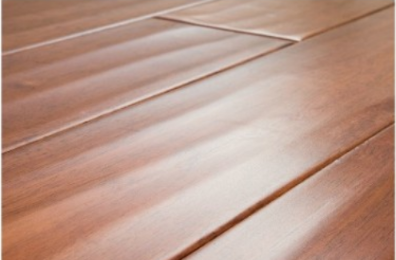
Moisture and dew point levels in Carolina crawl spaces constantly increase and decrease with the change of seasons. Crawl Space style foundations are one of the most commonly built construction types utilized in the Charlotte, North Carolina Market as well as the Southeastern United States as a whole. Many of these crawl spaces contain HVAC duct work installed inside the crawl space environment that service the upper areas of the home. Once the air conditioning is engaged, the duct work acts like a refrigerator coil causing crawl spaces to condensate at a more aggressive pace until the peak of the season in July and August. At certain times of the day, open crawl space vents can allow hot, humid outside air to intermingle inside the cooler and dryer crawl space air located inside the crawlspace environment accelerating the buildup of condensation and elevated wood moisture over time. This extra moisture is absorbed into the floor joists, girders, sub-flooring, and insulation. Wood moisture levels can exceed 19% over time causing floor systems to swell, and hardwoods to cup. Cupping floors can result into expensive repairs as homeowners may need to re-sand and refinish those hardwoods based on the amount of damage that has occurred. During the winter months, the opposite problem can and will often occur. Dew point levels are low and the cooler, dryer air infiltrates the crawl space drying out the sub-structure to a point where shrinkage occurs. Often wood moisture levels will drop to 4%-6% in winter. Over time, this may cause the hardwoods to crack, curl, and separate. Creaking and popping noises also get reported by homeowners during the winter months much more frequently. Homeowners with improperly calibrated dehumidifiers deployed inside the crawl space often enhance the problem by super drying the floor system reducing wood moisture levels down to under 3%. This can increase the damage to the hardwood floors as a result of excessive shrinkage and cracking. What is the solution to this elaborate dance of circumstances? Before spending any money on unneeded repairs, there are some simple general home maintenance items that the homeowner can apply first to help mitigate the challenge.
· Solve all foundation drainage and grading problems around the house.
· Keep gutters clean and free flowing. Upgrade to oversized gutters and discharge lines if possible.
· Extend all downspout discharge lines a minimum of 6ft. away from the foundation wall.
· Keep trees, bushes, and shrubs, well pruned and manicured to normal sizes so they don’t cause heaving and/or blocking of the crawl space vent locations.
· Keep below grade vent wells clear of mulch, yard waste, and other debris.
· Ensure that all flower beds are properly graded and sloped away from the house.
· If tolerable, raise the settings on the air conditioning up a few degrees during the summer to reduce run times and limit the dew point dynamic inside the crawl space that accelerates the right conditions for condensation build-up on the framing.
· Ensure the HVAC System is properly installed and calibrated.
· Ensure that all duct work is properly installed and sealed. Upgrade to new flex ducting, if possible, to improve overall efficiencies.
· Check for plumbing leaks inside the crawl space on a regular basis.
Once these basic home maintenance items have been completed there still may be a need for a crawl space moisture control program such as an encapsulation and/or controlled ventilation system to be installed on the home to eliminate the excess condensation and moisture build up. Please see the link below from a case study performed by a local structural engineering firm in Charlotte, North Carolina:
Keep in mind that the buildup of moisture inside crawlspaces is more of a result of poor lack of air exchange more so than direct moisture intrusion in many cases. Passive air movement infiltrating through the crawl space vent is actually a good thing during most of the year. The problem is the slow air exchange during the summer months that is not fast enough to keep up with the buildup of moisture. Over time, the crawl space reaches 100% relative humidity, or dew point at the peak of the summer season. Condensation begins to form on the duct work, insulation, floor system and/or other construction materials located inside the crawlspace. Once the framing members reach 19% wood moisture, the development of mold and other biofilm contaminates can begin in earnest. The tighter the crawlspace, the harder it is to move the fresh air and exhaust the older stale air. As a result of this problem, there has been an explosion of manufacturer / franchisee related concepts flooding the consumer market. Some of these solutions can be horribly expensive, predatory, and traumatic to the uneducated consumer. Some of these protocols recommended include:
· Installing Encapsulations.
· Spraying the crawl space wood framing members with expensive chemicals commonly called “encapsulants” in the industry.
· Installing expensive dehumidifiers.
· Installing expensive fiber reinforced liners and vapor barriers inside the crawl space.
· Installing high priced foam board insulation and spray foam products.
· Installing forced air induction utilizing existing HVAC equipment.
· Installing barometrically controlled crawlspace vents.
· Installing temperature-controlled crawlspace vents.
· Installing humidistat-controlled crawlspace vents.
· Installing power vents on timers.
All of these products have been appearing on the market with greater emphasis over the last 20 years. Each having its own set of disadvantages and pitfalls that homeowners should be aware of. Most importantly, the cost and accuracy of the systems. Encapsulations are expensive and nearly impossible to calibrate. Humidistat controlled fans and dehumidifiers have limited sensor capabilities and don’t operate efficiently in cooler temperatures as they are unable to calculate the dew point inside the crawl space. Spraying encapsulants on the outside of the framing members does not solve the moisture problem and actually traps moisture inside the wood permanently accelerating the start of structural wood rot issues. Barometric, and temperature-controlled fans do not open and close at the right times. In fact, they can open up at the wrong times often inviting unwanted air into the crawl space environment. Dehumidifiers use a lot of energy and have to be replaced quite often when out of proper calibration. Closed crawlspaces destroy crawl space air quality, allowing the off gassing of soil gasses, liner smells, biofilm contaminates, and other applicable construction materials to percolate up into the living areas over time. Homeowners often complain about cat urine smell from installed liners, foam board products and spray foam resins after the crawl space has been encapsulated. Pest control companies often cancel termite bonds as it is almost impossible to inspect the crawl space for termite tubes even with the 3” safety gap applied under the sill plate. Forced air induction pressurizes the space pushing unwanted air into the upper areas of the home at a more aggressive pace. Heating the crawlspace does not reduce moisture. It only changes the dew point. Cooling the crawlspace with air conditioning is the only way to pull moisture out of the crawlspace environment. However, it is impossible to monitor effectively and nearly impossible to calibrate causing the homeowner to waste energy unnecessarily. Often, a supplemental dehumidifier is still needed to assist a crawl space set up on forced air. These are just a few of the setbacks reported.
The good news is there is a way to protect those expensive investments in hard wood floors by installing a balanced, properly engineered hybrid system to enhance your crawlspace vents to work more efficiently as the builder intended. The only advanced fan technology on the market today that can solve this challenge with a guarantee for both moisture control and air quality is the hybrid technology called ATMOX Controlled Ventilation.
This dew point calibrated controlled fan system is equipped with advanced sensors and operating software combined with utilizing a key wood moisture sensor that can help regulate the flow of air into and out of the crawlspace in a controlled way. The exterior and interior sensors constantly send data to the controller, and the controller determines when the fans fire. All done with energy friendly low-voltage technology. The system can also be equipped with a commercial dehumidifier on complex installs if extra drying power is needed during the summer months. Once installed, the homeowner can enjoy a guarantee for moisture reduction, eliminating odors and smells, as well as maintaining high air quality for the whole house envelope. The advanced ACE controller even has the capability to allow moist air back into the crawl space during a wet, mild, winter day to re-hydrate the floors when they get too dry during the fall and winter months. A key feature in maintaining global wood moisture consistency. It is important to remember that half the air you breathe each day originates from the crawlspace environment. Having an abundance of fresh, clean air is certainly a plus. Often, there is no need to run the expensive dehumidifier to achieve the desired results. For more information on this unique, green energy driven technology please feel free to reach out to us for more information. A site consultation at your home can be arranged to engineer the system to be suitable for your crawlspace and/or basement footprint.
Again, be careful of being pressured into purchasing things that you don’t need by high pressure commissioned based sales people waving glossy brochures. Each home must be evaluated on a case-by-case basis. And there is never a one size fits all solution to resolve this very complex problem. For more information on hardwood floors please visit the attached link below from a reputable engineering firm:
Always do plenty of research, and remember, “Don’t Encapsulate, Ventilate!
